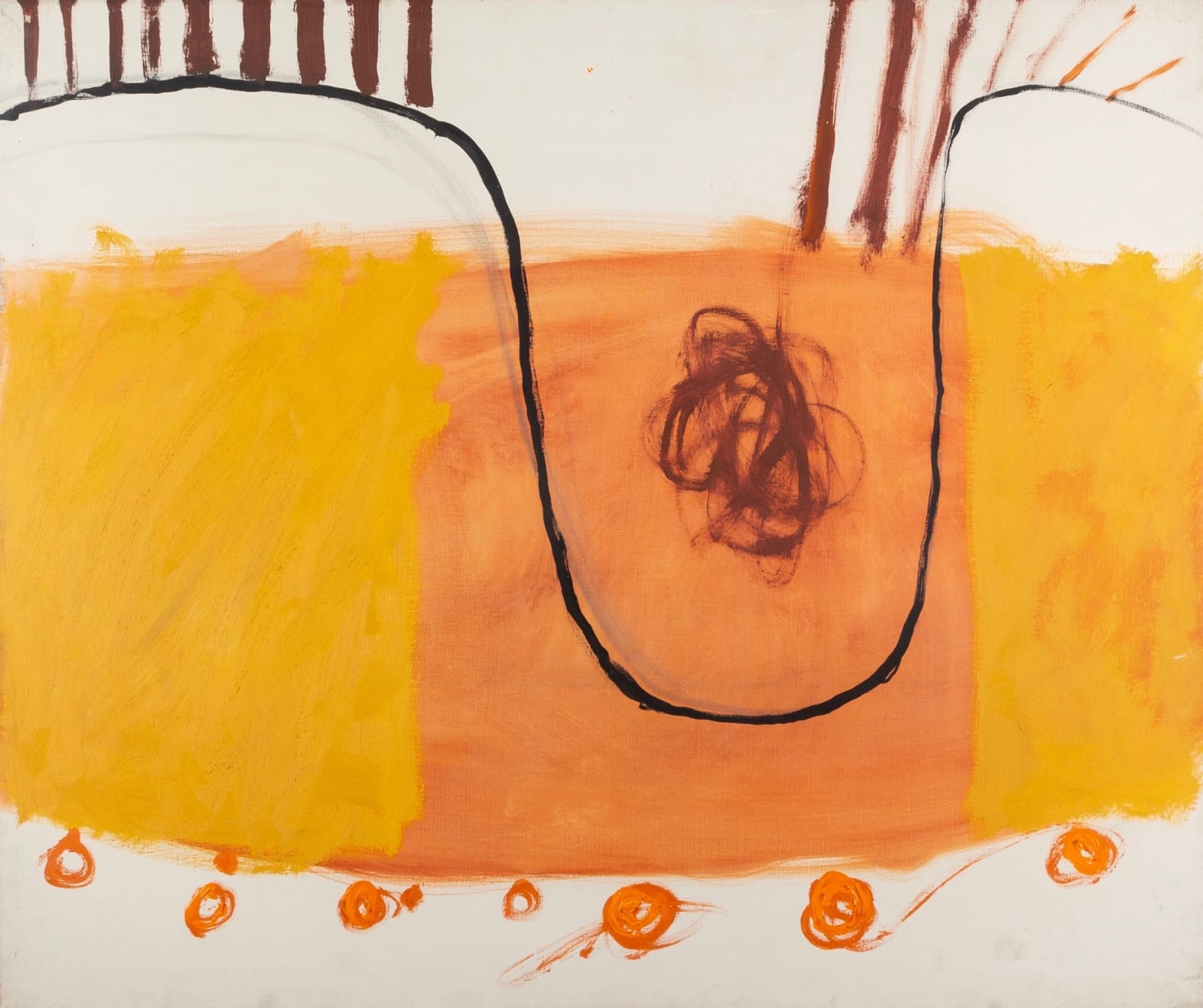Roger Hilton 1911-1975
Oct '64, 1964
oil on canvas
76.2 x 91.4 cm
30 x 36 in
30 x 36 in
signed, dated, titled and inscribed verso
‘Oct ‘64’ was painted at the height of Hilton’s career and at a time when Hilton was being fully recognised as one of the most radical and inventive leading exponents...
‘Oct ‘64’ was painted at the height of Hilton’s career and at a time when Hilton was being fully recognised as one of the most radical and inventive leading exponents of abstract art in Britain. Having been taken on by Leslie Waddington in 1959, he then went on to win first prize at the John Moore’s exhibition in 1963 and in the same year that this work was painted he won the UNESCO prize at the Venice Biennale.
Hilton is often considered a Cornish Artist, but he was arguably one of the most European artists of his generation. Unlike many of his contemporaries, he had engaged with, but was not consumed by, the dialogue with American abstraction. Having lived and studied in France before the outbreak of war, he continued to visit regularly and was immersed in the abstract-figurative dialogue of the Ecole de Paris. By 1960 he had arrived at a language of organic abstraction which showed a continued negotiation between abstraction and figuration but also the importance of drawing through his varied mark making and use of the charcoal line.
His paintings from this time are not about the narrative but rather the paint itself. In this work the simple compositional arrangements belie the consideration that has gone into the juxtaposition, layering and exposed traces of underpainting. The painting gives the impression of spontaneity and although Hilton painted in quick short bursts, there was much contemplation and deliberation about his next move – every gesture in a Hilton painting is deliberate, considered and made to count. Andrew Lambirth has written of how ‘Hilton’s mature style intentionally brought the notion of the sketch to the finished picture, thus generating a new immediacy in the work’ (Lambirth 2017). It was this unique style of blending apparent control with uninhibited spontaneity that projected Hilton onto the international stage, leaving him with a reputation as one of the most innovative and exciting artists of Post-War Britain.
Hilton is often considered a Cornish Artist, but he was arguably one of the most European artists of his generation. Unlike many of his contemporaries, he had engaged with, but was not consumed by, the dialogue with American abstraction. Having lived and studied in France before the outbreak of war, he continued to visit regularly and was immersed in the abstract-figurative dialogue of the Ecole de Paris. By 1960 he had arrived at a language of organic abstraction which showed a continued negotiation between abstraction and figuration but also the importance of drawing through his varied mark making and use of the charcoal line.
His paintings from this time are not about the narrative but rather the paint itself. In this work the simple compositional arrangements belie the consideration that has gone into the juxtaposition, layering and exposed traces of underpainting. The painting gives the impression of spontaneity and although Hilton painted in quick short bursts, there was much contemplation and deliberation about his next move – every gesture in a Hilton painting is deliberate, considered and made to count. Andrew Lambirth has written of how ‘Hilton’s mature style intentionally brought the notion of the sketch to the finished picture, thus generating a new immediacy in the work’ (Lambirth 2017). It was this unique style of blending apparent control with uninhibited spontaneity that projected Hilton onto the international stage, leaving him with a reputation as one of the most innovative and exciting artists of Post-War Britain.
Provenance
Estate of the ArtistPrivate Collection, London



